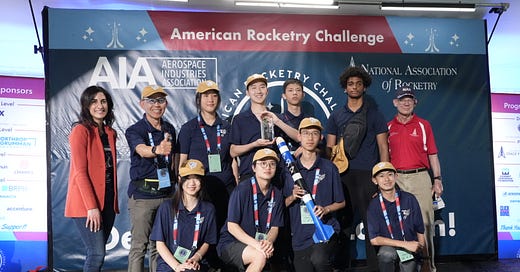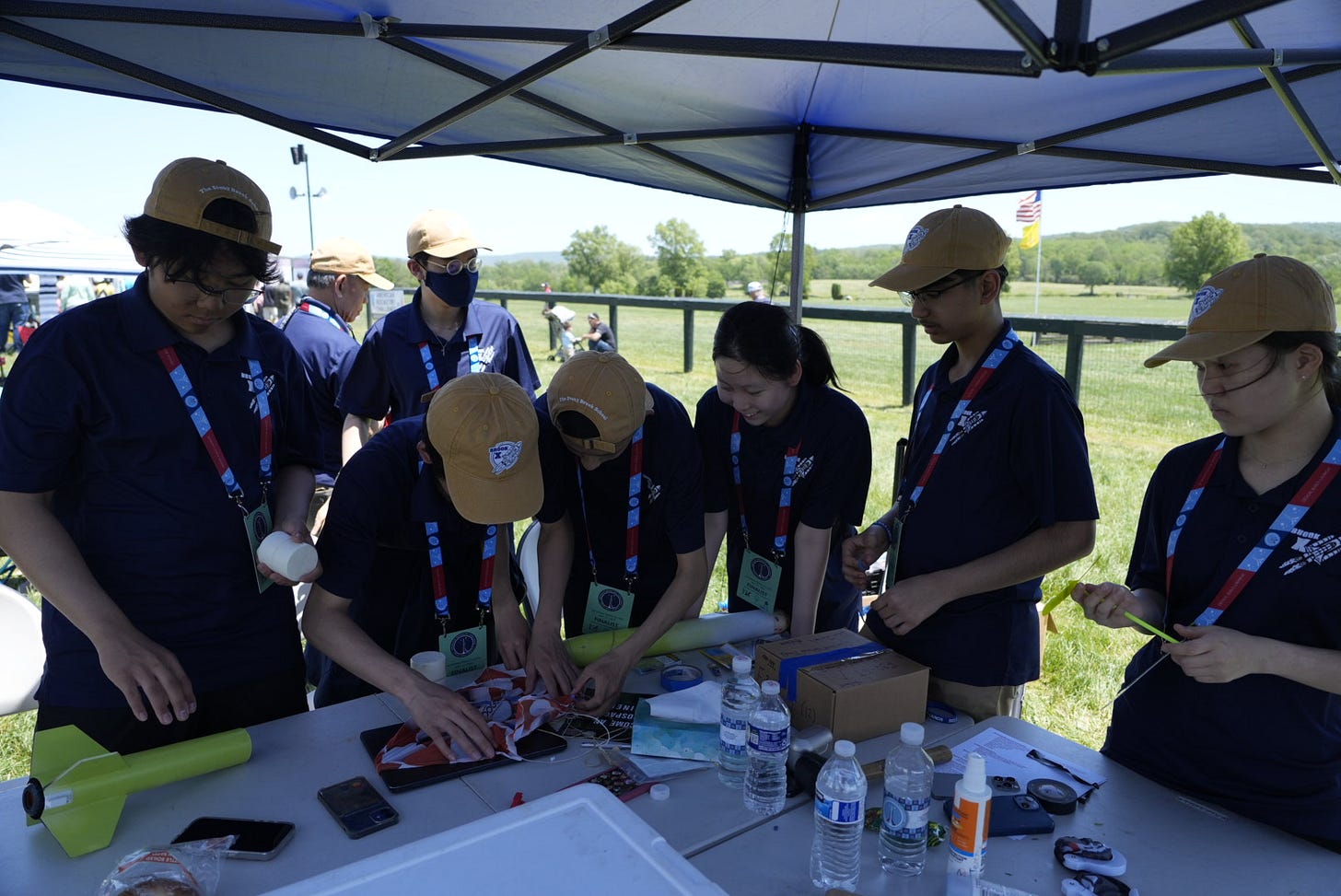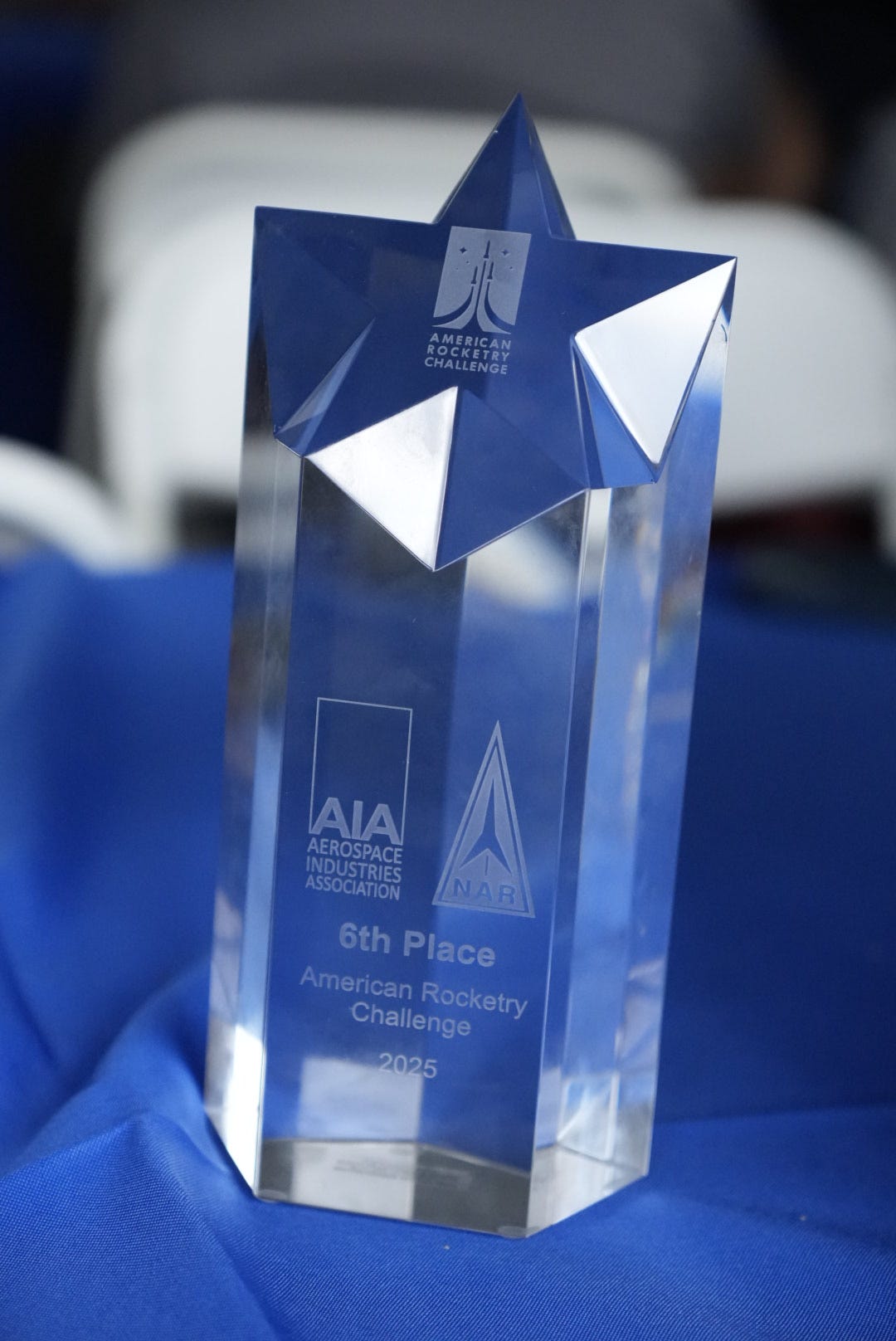Blasting Off: Behind BrookX’s Journey to the NASA Student Launch Challenge Finals
By Michael Zhang
The NASA Student Launch Challenge is a 9-month-long experimental high-powered rocketry competition which involves an extensive research and design process. A pre-college team is only eligible if it is a top 25 finisher in the previous American Rocketry Challenge (ARC). Teams need to submit a proposal first in September and, after being selected, must provide a series of technical reports that are presented to the NASA expert panel.
Stony Brook’s 2 ARC teams comprised a total of 17 members this year: 13 rookies and only 4 returning veterans, being Roger Zhou, David Zhang, Vincent Zhao, and Sebastian Guadalupe-Peña. The members were split into two teams, one led by the returners and one fully staffed by the. Both teams qualified for the 2025 National Finals in The Plains, VA, near Washington, DC., placing 6th and 42nd in the nation out of 1001 teams total, winning $4,000 for the school.
Moreover, Dr. Liu highlighted the increasing diversity of the Rocketry program this year. The two teams had four female first-year members this year, and with the use of virtual meetings, have incorporated a Gravitas student living in India.
After a successful demonstration flight, the rocketry team received an official invitation to participate in the 2025 finals of the NASA Student Launch at Huntsville, Alabama. Stony Brook was the only high school qualified this year from the Northeast region and one of only 12 pre-college teams. Other teams competing in the 2025 finals include MIT, Carnegie Mellon University, Northwestern, and Georgia Tech. Further, Stony Brook’s rocketry program was one of the only five in the nation where both teams qualified for both the NASA Student Launch Challenge and ARC National Finals.
Under pressure to defend last year’s top-10 national ranking, the team faced a rocky start. Inconsistent launches and the steep learning curve for 13 new members made early progress slow. During a critical 36-hour window from March 28 to 30, the team rebounded from temporary setbacks to qualify for nationals, witnessed by officials from the National Association of Rocketry. Veteran members played key roles in mentoring, while first-year students like Yeri Kim rose to help the team in important ways, demonstrating the ability for everyone to participate and embodying the team's core values—assertiveness, resilience, and collaboration. These values guided them through setbacks, and a shared belief in faith and each other sustained momentum.
Over the season, the team produced over 200 pages of technical documentation and used software like OpenRocket and RockSim for simulation and design. Components were custom-built using state-of-the-art equipment in the STEM Lab, while flight data and machine learning refined predictions. Though the rocketry season only began in the spring, students worked year-round—over breaks, weekends, and even virtually across time zones. Despite being a high school team, BrookX held its own against top-tier universities, recognizing the honor to compete in such a prestigious opportunity and combining academic rigor with unmatched dedication.
Moreover, what began as a just competitive team has grown to fit into a larger role in the community. Establishing a Junior Rocketry Club for kids aged 7–12, hosting workshops at Emma S. Clark Library, and launching with local schools are only some of the outreach efforts done by the BrookX team. Partnering with the Long Island Explorium and attending the Long Island Maker Fair, the team strives to broaden access to STEM.
Over this school year, BrookX raised over $20,000 in donations and traveled more than 7,000 miles by school bus to compete, a remarkable show of dedication from the program. BrookX’s journey accentuates that success in rocketry isn’t just about altitude and precision: it’s about purpose, persistence, and the people you inspire along the way.






